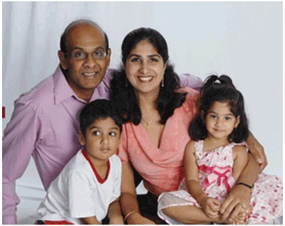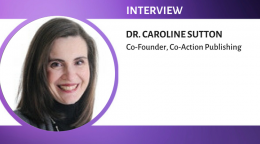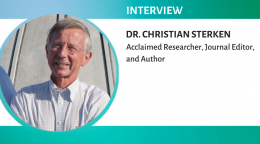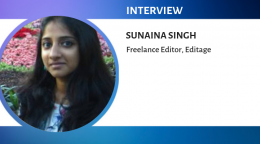"My goal is to make sure your manuscript is ready to go!"

After Bachelor’s and Master’s degrees in Biology, Lavanya obtained a Ph.D. in Biophysics/Biochemistry in 2005, and proceeded to post-doctoral training and a full-time faculty appointment at the University of Texas. Her current research focuses on the biophysical aspects of the functioning of a membrane protein in the cochlea.
How did you decide to enter the field of academic publishing?
Throughout my scientific career, it has struck me repeatedly that if science can be communicated directly and simply, its message would reach and inspire a much wider audience. In informally editing my colleagues or students’ papers, I had often found this clarity of communication lacking. It seemed a natural step to progress to a career in which I could use both my scientific knowledge and my communication skills.
At Editage, you play multiple roles: pre-submission peer reviewer, journal selection expert, and academic editor. How has this experience influenced your approach towards writing, editing, and publishing a manuscript?
The freelance work I do for Editage spans the entire process of putting a paper together, from collating the raw data to the submission of the finished paper to a journal. Having edited and reviewed manuscripts from varying disciplines and targeted to a range of journals and audiences, I now have a deeper appreciation of the importance of a well-structured and well-presented manuscript. Although my fundamental approach to writing a new manuscript has not changed, I have been able to fine-tune and optimize each aspect of the process. This includes putting the initial draft together (starting with the Results, then Methods, then Introduction and Discussion, and finally the Abstract), the structuring of each section (setting the stage in the Introduction, and fleshing out the significance and relevance of the research in the Discussion), and ensuring grammatical and scientific accuracy and lucidity throughout.
You are a published author and have served as a peer reviewer. Based on your own experience, how do you define a good/well-structured manuscript?
The most important characteristic of a good manuscript is simplicity. The goal of a manuscript is to communicate one’s results and findings in a clear and concise manner – it is not necessary to “impress” readers or reviewers with overly technical or involved writing; this tends to reduce the clarity of the manuscript, making it harder for the scientific message to be communicated. Additionally, the paper should flow logically. A gap in the existing knowledge should be identified and clearly defined in the Introduction, setting the stage for the study. The Methods section should include all the information necessary to understand and reproduce the study, and omit all other extraneous details. The Results should be clearly described, and listed in logical order. The Discussion section should begin with the main conclusion of the paper, and expand on this by elaborating on the possible significance and relevance of the data.
Throughout, the focus of the paper should be clear and the reader should be led through the sections in as direct and lucid a manner as possible. I believe that the principles of clarity and simplicity are equally important in grant writing and manuscript writing.
As an author, how did you go about selecting journals for the papers you published? Could you provide any journal selection tips for our authors?
As a researcher, one is in a very good position to judge the best journal for one’s own papers. In each field of study, there are a couple of ‘top-tier’ journals, several good journals with respectable impact scores, and many journals with slightly lower impact scores. After collating the data and/or writing a preliminary draft, it is important to take a step back, look at the data and conclusions critically, and evaluate two things: the significance of the data, and the target audience. Knowing the significance of the data and conclusions helps narrow the selection of journals to those with an appropriate impact factor. Identifying the right target audience facilitates the selection of journal(s) with the appropriate scope and aims. In most cases, once these two factors are taken into account, the choice is automatically narrowed down to one or very few journals.
As an academic editor, how do you define a good English paper? Do you have any advice for authors on how to improve their writing skills?
Again, it comes down to simplicity. I suggest evaluating the necessity or redundancy of every word in a sentence. Achieving proper grammar and sentence construction is more challenging, especially for non-native speakers and authors. However, most word processing programs, like MS Word, have inbuilt grammar checks and spell checks – make full use of these. Over time, writing grammatically and lucidly will become second nature.
 Would you like to share any memorable experience you’ve had with a client?
Would you like to share any memorable experience you’ve had with a client?
A number of editing jobs I receive are from repeat clients requesting my editing services specifically, as they have been happy with my work in the past. This is very gratifying!
You clearly have a busy life. How do you spend your time when you’re not helping authors get published?
I do have many things going on! I am a mom of two preschoolers. I am also a performer, choreographer, and teacher of Bharatanatyam, an Indian classical dance form, and run a non-profit dance institution that recently celebrated its 10th anniversary. I typically spend a few hours on editing early in the morning and late at night, work on my research during the day, teach dance during the weekends and some weekday evenings, and cram in plenty of family time as well!
A few words for our clients…
As an editor, my goal is to make sure your manuscript is ready to go. I edit and re-edit the manuscript until I am satisfied that it is ready for submission. If changes are required that are beyond the scope of my edit, I usually leave a note stating so, so that you have the option of coming back for a more extensive edit, or making the suggested changes yourself. Editage’s operating procedures are very well designed to make sure the clients and editors have a great experience during the process – I urge you to look on the process as an iterative and collaborative one so we editors can help you get your manuscript into the best shape possible.
Published on: Dec 19, 2013
Comments
You're looking to give wings to your academic career and publication journey. We like that!
Why don't we give you complete access! Create a free account and get unlimited access to all resources & a vibrant researcher community.







